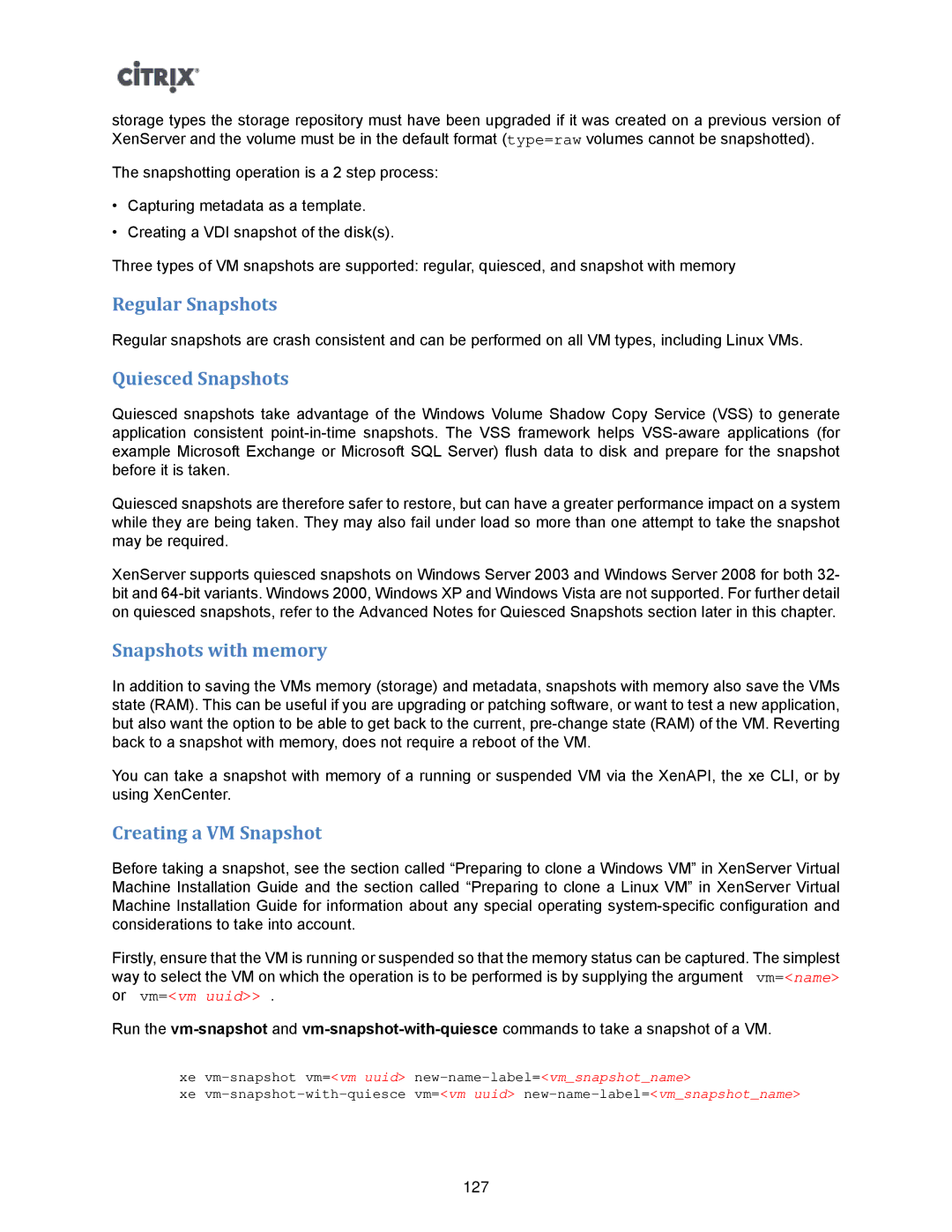storage types the storage repository must have been upgraded if it was created on a previous version of XenServer and the volume must be in the default format (type=raw volumes cannot be snapshotted).
The snapshotting operation is a 2 step process:
•Capturing metadata as a template.
•Creating a VDI snapshot of the disk(s).
Three types of VM snapshots are supported: regular, quiesced, and snapshot with memory
Regular Snapshots
Regular snapshots are crash consistent and can be performed on all VM types, including Linux VMs.
Quiesced Snapshots
Quiesced snapshots take advantage of the Windows Volume Shadow Copy Service (VSS) to generate application consistent
Quiesced snapshots are therefore safer to restore, but can have a greater performance impact on a system while they are being taken. They may also fail under load so more than one attempt to take the snapshot may be required.
XenServer supports quiesced snapshots on Windows Server 2003 and Windows Server 2008 for both 32- bit and
Snapshots with memory
In addition to saving the VMs memory (storage) and metadata, snapshots with memory also save the VMs state (RAM). This can be useful if you are upgrading or patching software, or want to test a new application, but also want the option to be able to get back to the current,
You can take a snapshot with memory of a running or suspended VM via the XenAPI, the xe CLI, or by using XenCenter.
Creating a VM Snapshot
Before taking a snapshot, see the section called “Preparing to clone a Windows VM” in XenServer Virtual Machine Installation Guide and the section called “Preparing to clone a Linux VM” in XenServer Virtual Machine Installation Guide for information about any special operating
Firstly, ensure that the VM is running or suspended so that the memory status can be captured. The simplest way to select the VM on which the operation is to be performed is by supplying the argument vm=<name>
or vm=<vm uuid>> .
Run the
xe
xe
127
